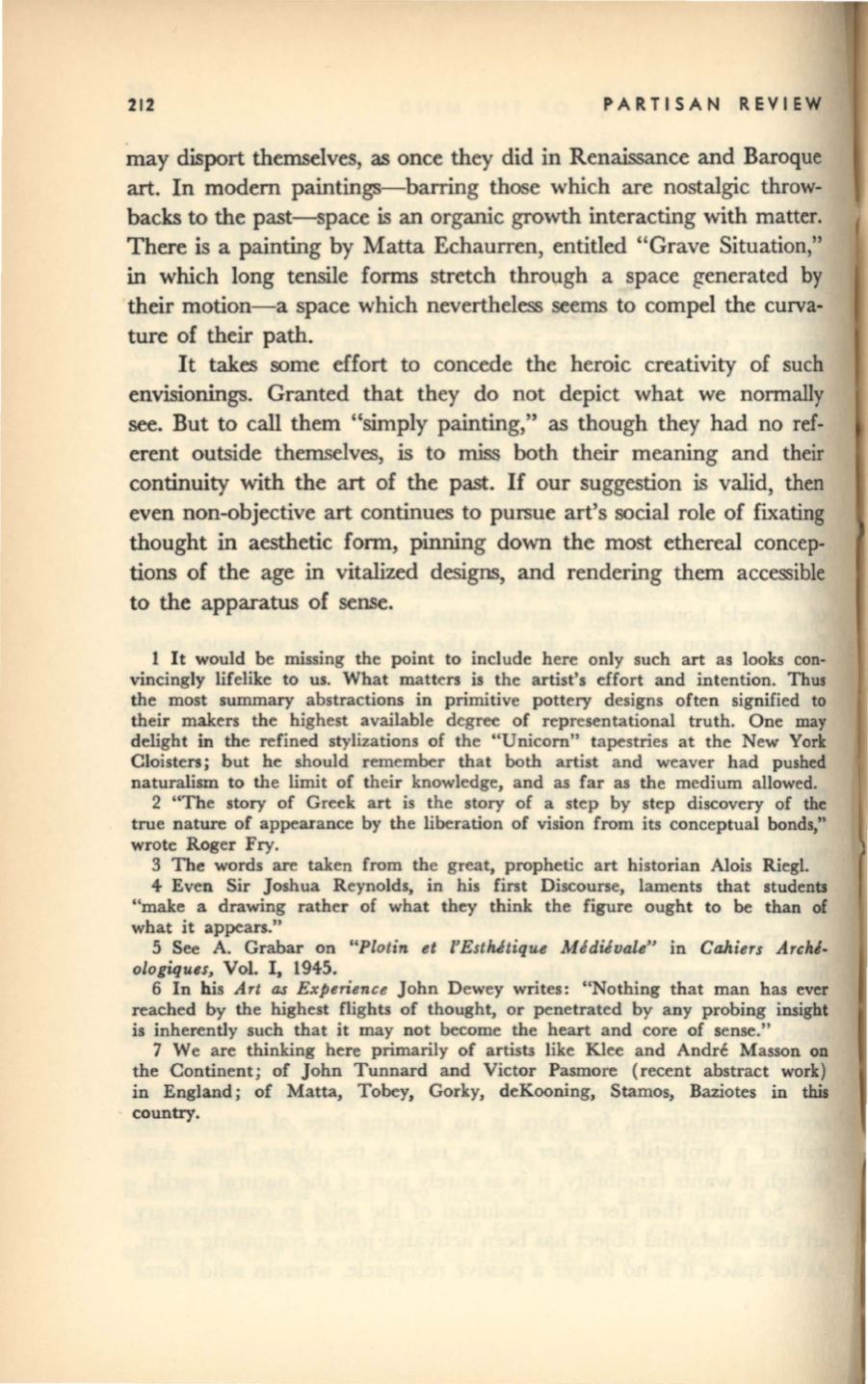
212
PARTISAN REVIEW
~ay
disport themselves, as once they did in Renaissance and Baroque
art. In modem paintings-barring those which are nostalgic throw–
backs to the past-space is an organic growth interacting with matter.
There is a painting by Matta Echaurren, entitled "Grave Situation,"
in which long tensile forms stretch thro1,lgh a space generated by
their motion-a space which nevertheless seems to compel the curva–
ture of their path.
It takes some effort to concede the heroic creativity of such
envisionings. Granted that they do not depict what we nonnally
see. But to call them "simply painting," as though they had no ref–
erent outside themselves, is to
miss
both their meaning and their
continuity with the art of the past.
If
our suggestion is valid, then
even non-objective art continues to pursue art's social role of fixating
thought in aesthetic fonn, pinning down the most ethereal concep–
tions of the age in vitalized designs, and rendering them accessible
to the apparatus of sense.
1 It would be missing the point to include here only such art as looks con–
vincingly lifelike to us. What matters is the artist's effort and intention. Thus
the most summary abstractions in primitive pottery designs often signified to
their makers the highest available degree of representational truth. One may
delight in the refined stylizations of the "Unicorn" tapestries at the New York
Cloisters; but he should remember that both artist and weaver had pushed
naturalism to the limit of their knowledge, and as far as the medium allowed.
2
"The story of Greek art is the story of a step by step discovery of the
true nature of appearance by the liberation of vision from its conceptual bonds,"
wrote Roger Fry.
3
The words are taken from the great, prophetic art historian Alois Riegl.
4
Even Sir Joshua Reynolds, in his first Discourse, laments that students
"make a drawing rather of what they think the figure ought to be than of
what it appears."
5
See A. Grabar on
"Plotin et l'Esthetique Midi/vale"
in
Cahiers Archl–
ologiques,
Vol. I, 1945.
6 In his
Art as Experience
John Dewey writes: "Nothing that man has ever
reached by the highest flights of thought, or penetrated by any probing insight
is inherently such that it may not become the heart and core of sense."
7 Weare thinking here primarily of artists like Klee and Andre Masson on
the Continent; of John Tunnard and Victor Pasmore (recent abstract work)
in England; of Matta, Tobey, Gorky, deKooning, Stamos, Baziotes in this
country.


